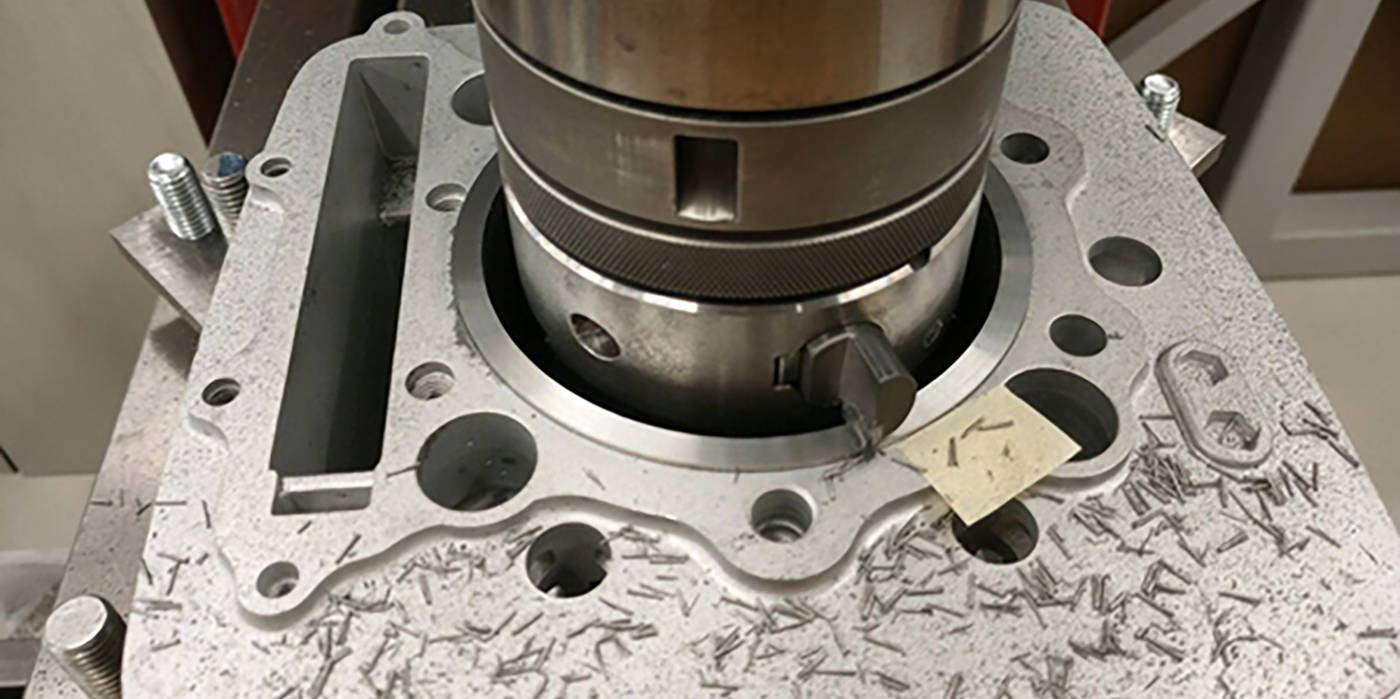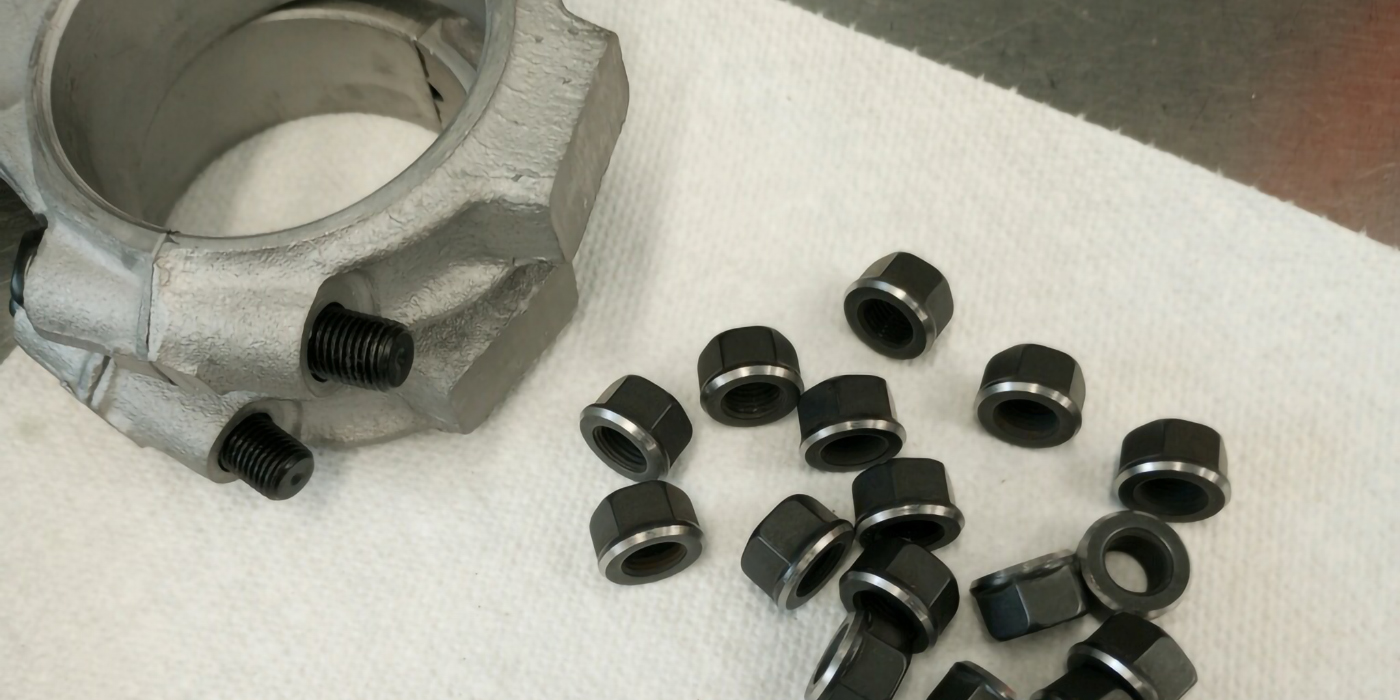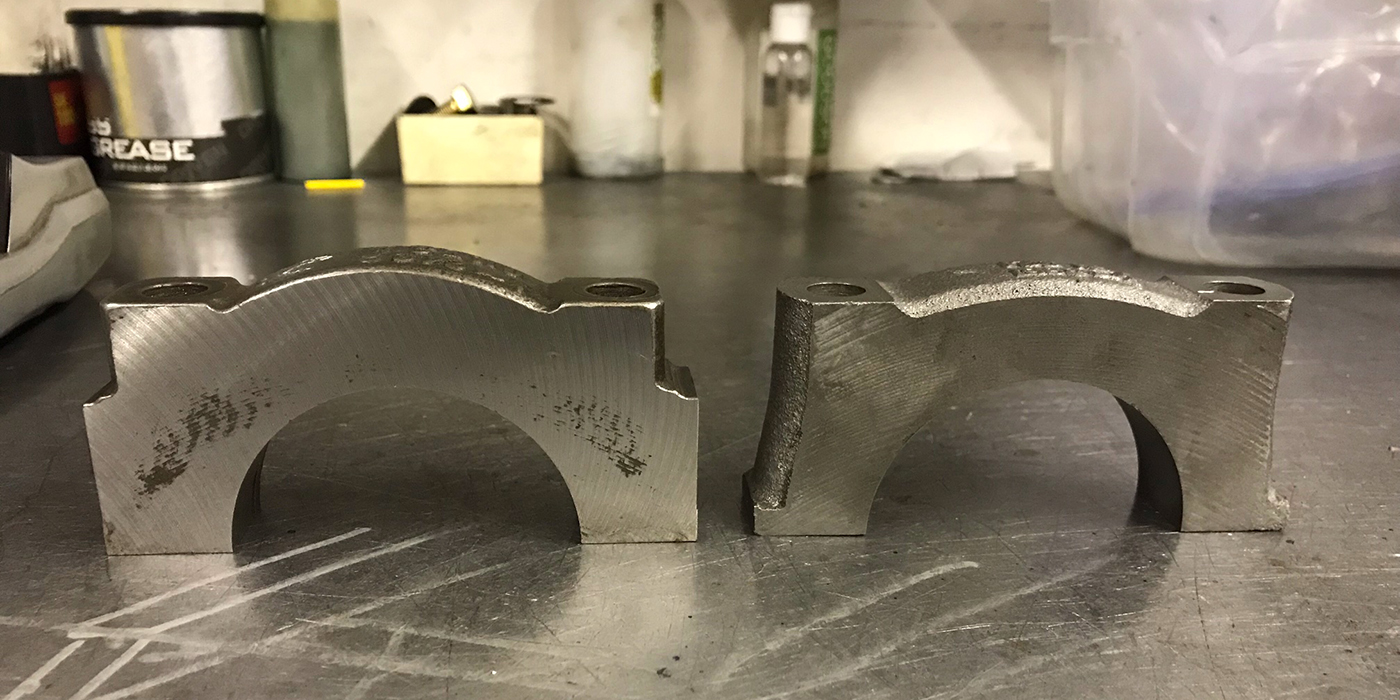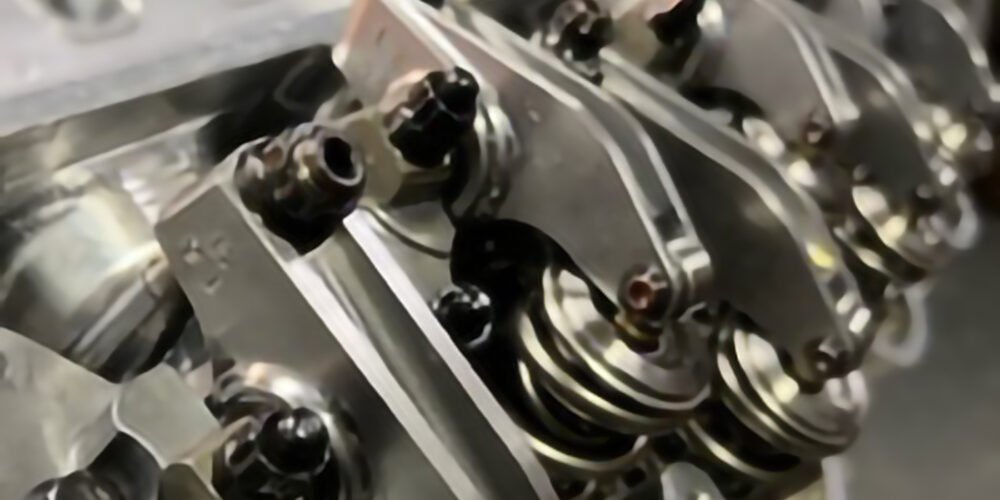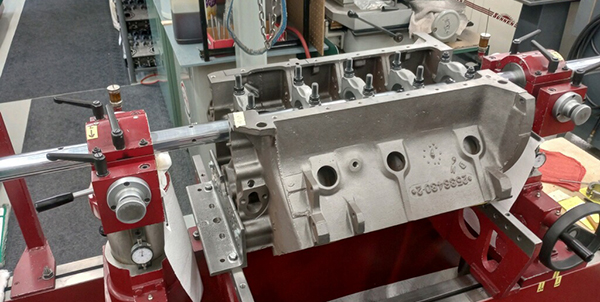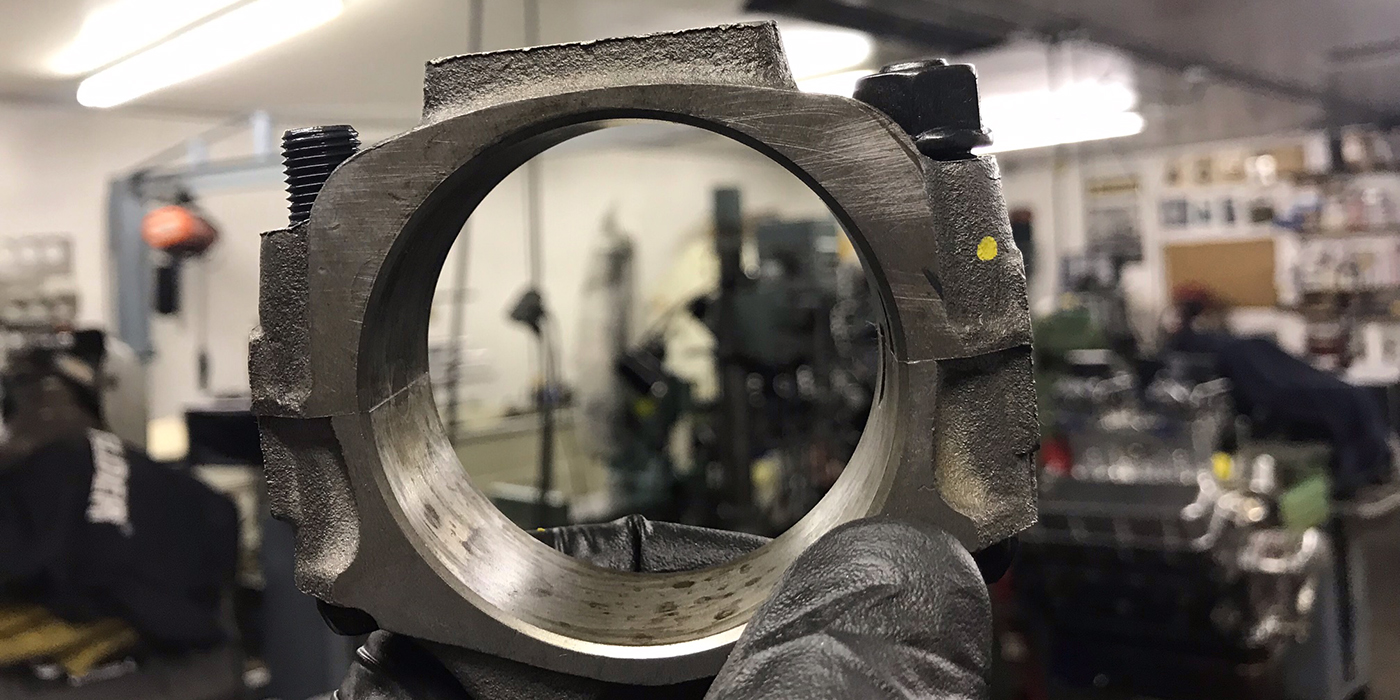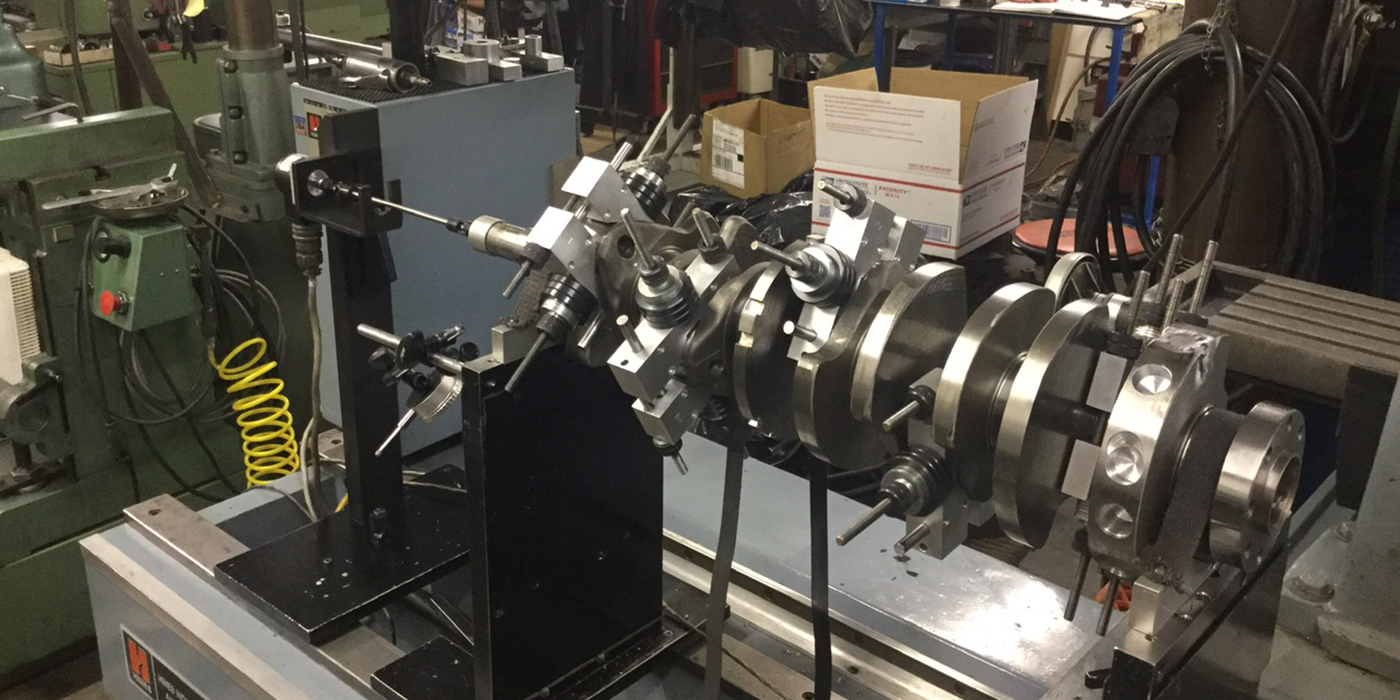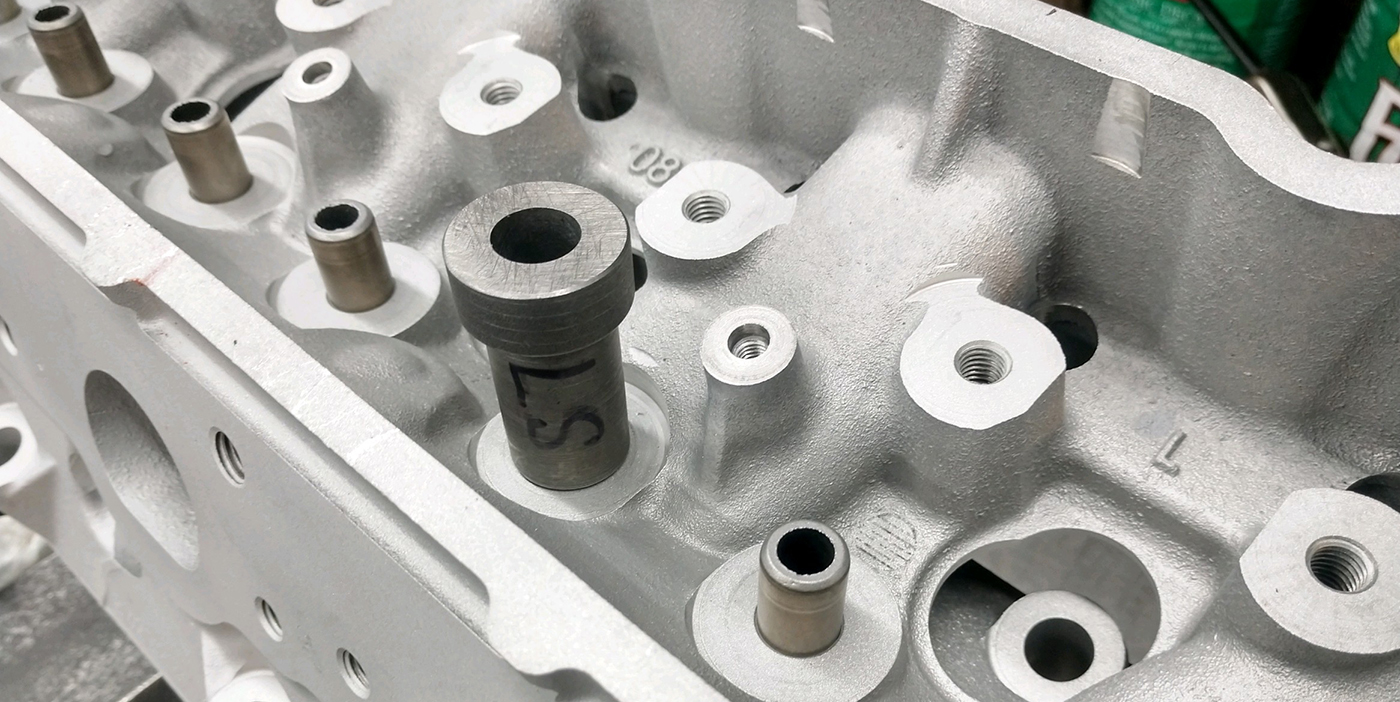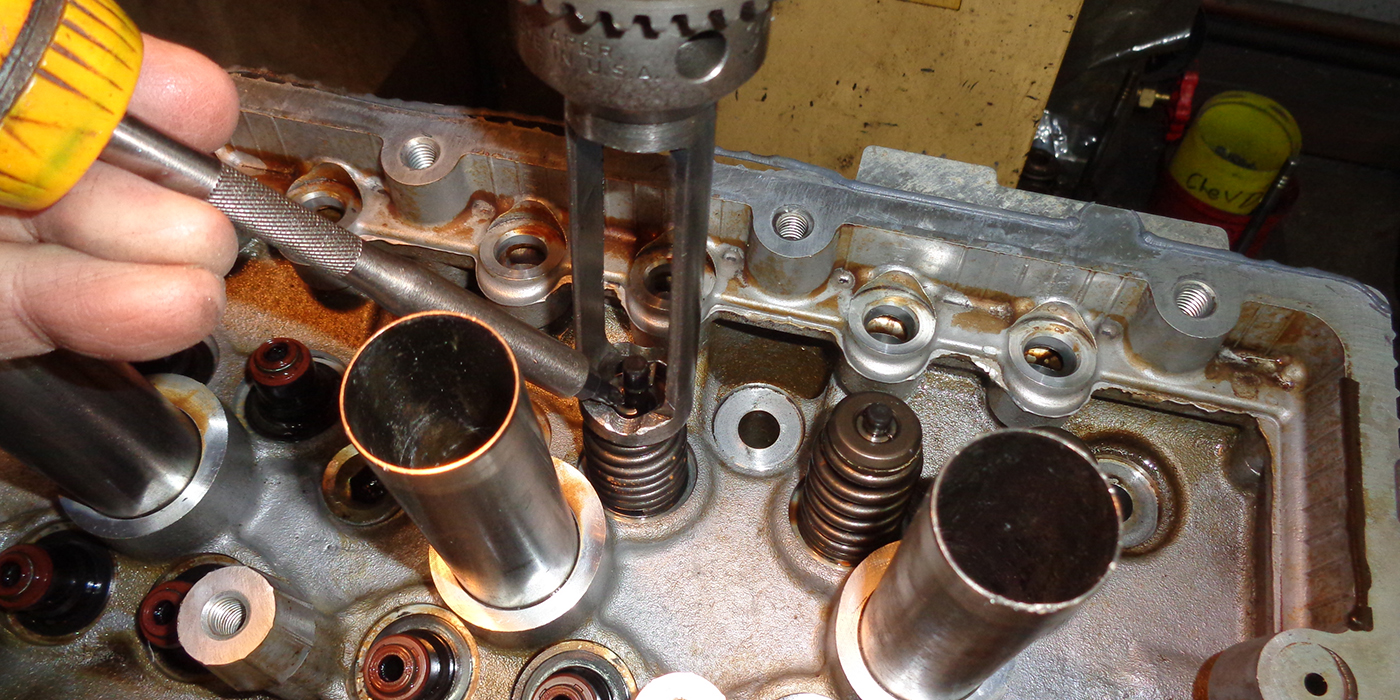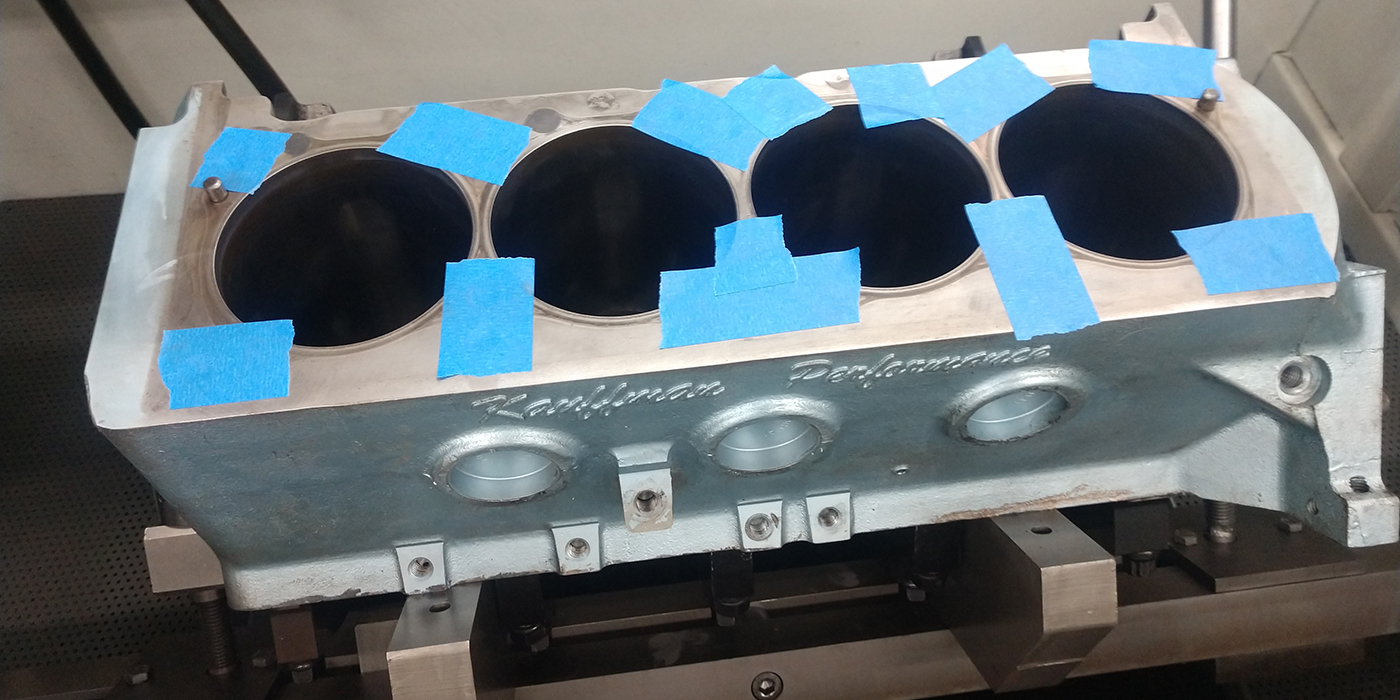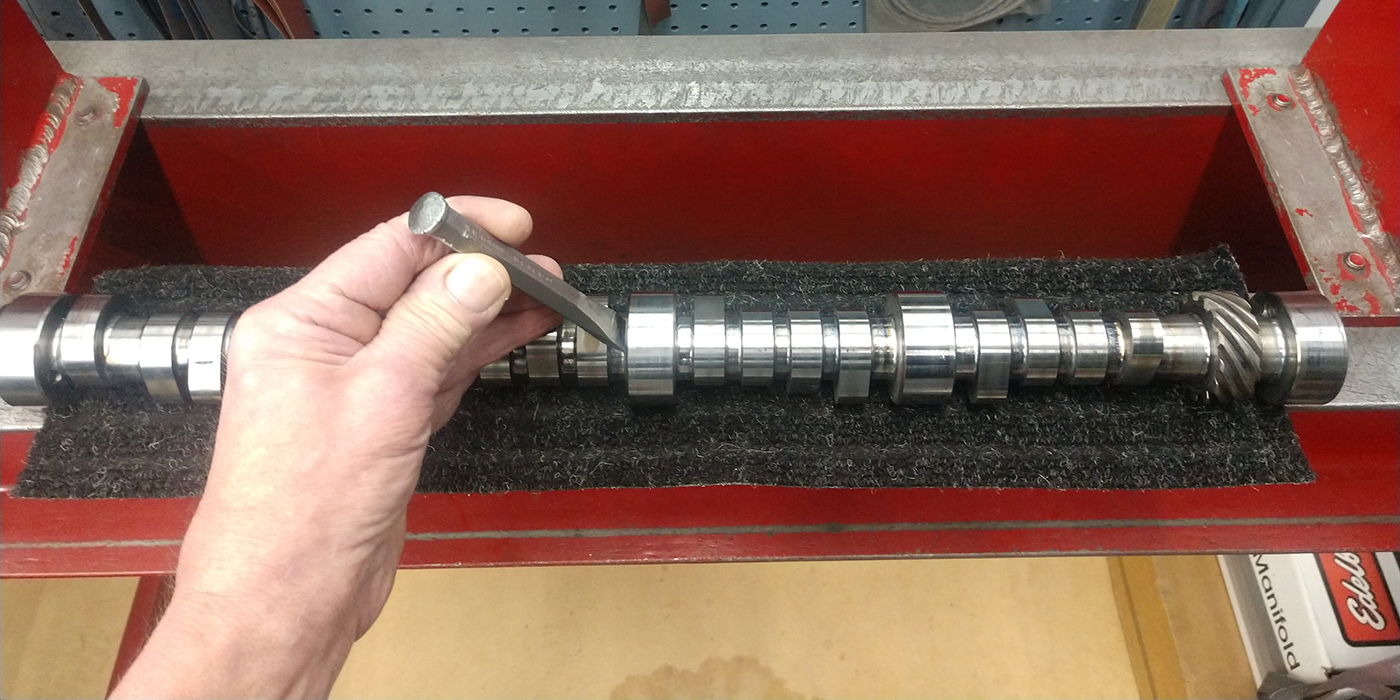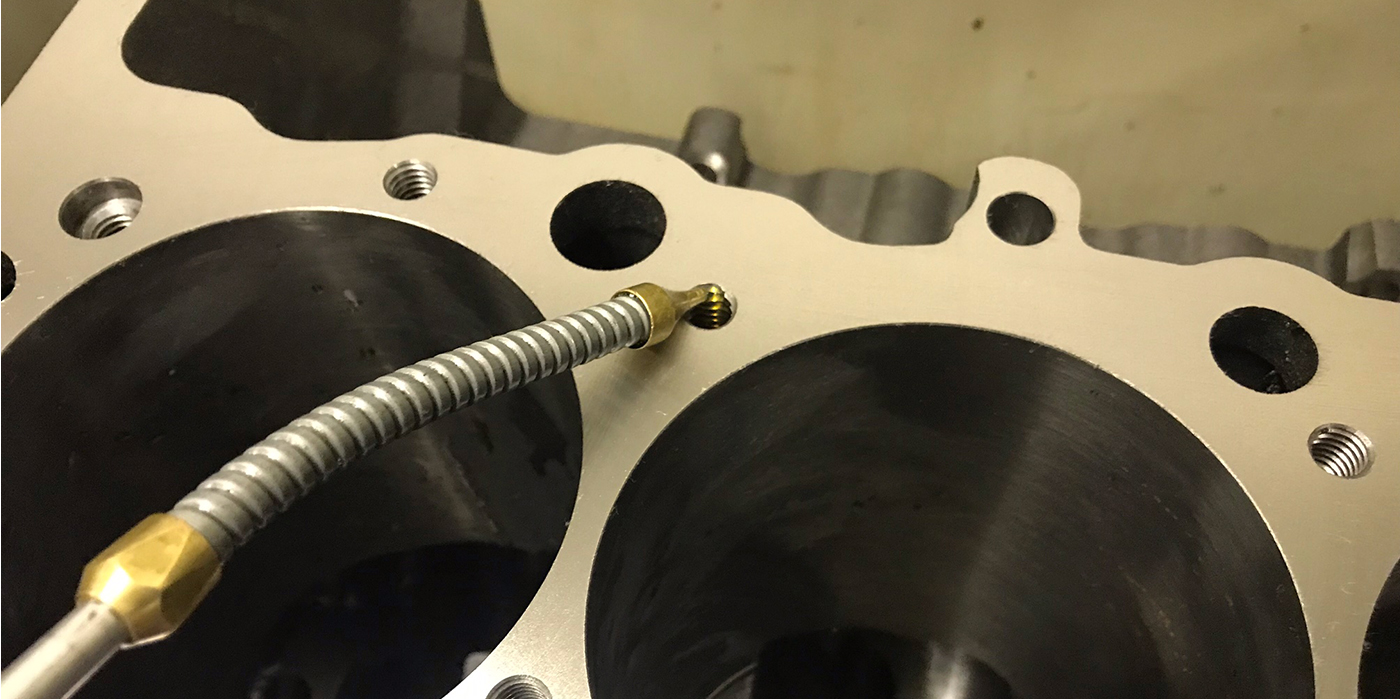Duramax Piston Quality
The GM Duramax diesel engine has been around since 2001. Many owners
have logged over 400,000 miles and the engines are starting to show up
at machine shops for rebuilding. They are also used quite successfully
in truck pulling competition. It should be noted that the original
(O.E.) pistons from 2001-2005 are quite strong. But from 2006 and up
the piston bore is bushed, and this has weakened the factory part.
Also both engines can suffer from broken camshaft locating dowel pins.
This tends to happen when ether is used as a starting aid. If the
engine kicks back the dowel pin will break. Some high performance
diesel engine builders mill a slot into the camshaft, thereby replacing
the dowel pin with a stronger woodruff key. This should prevent any
further damage.
Dave Sutton
Sterling Eng. Parts
Minneapolis, MN
Never Lose Valve Locks Again
With the myriad of different
styles of valve locks today, an engine builder can have a tough time
keeping track of valve locks. I use old pill bottles or vitamin bottles
to keep valve locks organized for easy access. You can also use them to
clean valve locks. Just fill the pill or vitamin bottle with solvent
and shake. Hot pepper shaker bottles also work well.
Jeff Beseth
BeezerBuilt Inc.
Newton Square, PA
 Premature Valve Guide Failure on Newly Rebuilt Cylinder Heads
Premature Valve Guide Failure on Newly Rebuilt Cylinder Heads
A problem that I had to deal with from time to time during the twenty
some odd years of owning my own machine shop was the mysterious failure of valve guides on a freshly rebuilt cylinder head. This issue used to drive me crazy. It seems that a pair of, let’s say late ’70s small
block Chevy, cylinder heads would come back to me after just a very
short period of running, maybe less than 500 miles. After disassembly,
the following clues were apparent:
1) It was usually a cast iron, solid type press in guide that failed.
2)The exhaust side was ALWAYS the failure.
3) Sometimes it was the center valve (ERG port) and sometimes an end valve.
4) There was a tremendous amount of dried, cooked carbon or burnt oil on the valve stem and on the valve spring.
5) The valve guide was sometimes almost worn into the actual head casting.
6) This problem NEVER happened to the original valve guide.
7) There were no signs of overheating.
8) As an experienced machinist, I KNEW the clearances were correct and the assembly/geometry was right.
So, what happened? As an experienced machinist, you know there must
be more to this problem than the proverbial “stuff happens?” The clues
tell you that it’s always the exhaust valve, it never happens on the
original valve guide. The wear is not normal wear but a drastic
premature failure. The conclusion leads to it being heat causing a lack
of lubrication then causing the failure, but the heads show no signs
overheating. So, what kind of heat is responsible?
The fact that it never happens to the original guide led me to
believe that a lack of heat transfer from the hot exhaust valve into
the head casting was not taking place, or at least not enough of a
transfer anyway. An exhaust valve only has two ways to transfer heat,
through the valve seat or though the valve guide. The problem with seat
transfer is the contact period between the valve and seat is too brief.
The solution would be to solve the lack of heat transfer through the
guide. Voila! Pre-coating the inside of the guide bores prior to
installing the valve guides solved the heat transferring problem.
If you think about it, whenever there are two machined surfaces of
metal that are mated together, such as the press fit of a valve guide
and its guide bore, it is impossible to have a 100% metal to metal
contact. There are microscopic air pockets that exist between the
metal making a complete heat transfer impossible. The solution is to
eliminate those air pockets.
The product to use is “Fluid Weld” made by Seal-Lock. This white,
creamy looking chemical will withstand temperatures of up to 3,000° F,
thereby staying in place and not burning off.
The technique I used whenever I was building cylinder heads was to
take a long, round bladed screwdriver, cut the end off so you had just
a long round shaft and use this shaft to dip into the bottle of Fluid
Weld and then coat the inside of the guide bores using a “stirring”
motion to completely coat all of the inner surface, using it sparingly.
If you do all eight guide bores on a typical V8 cylinder head, then
it’s not necessary to use any other type of “press fit” lubricant.
However, you must immediately install the guides after coating the
guide bores, otherwise they may seize up on you. However, this only
happens if you don’t install the guides immediately.
Fluid Weld is available from Engine & Performance Warehouse. The
part number is K3332OZ. The jobber price is $19.63 for a 2.2oz bottle.
Even though the bottle is small, using it as described above, the
bottle will last a long time. Larger sized bottles are also available.
Also use it for valve seat installation to obtain that same heat
transferring properties.
Marcus Marrs
Territory Manager
Engine & Performance Whse.
Engine Builder Shop Solutions is sponsored by Engine Pro,
a consortium of 14 engine parts specialist WDs operating 33 branch
locations serving engine builders/rebuilders across the U.S. Shop
Solutions published in each issue of Engine Builder Magazine are
awarded a $100 Visa Gift Card. Winners will be chosen by
the staff of Engine Builder Magazine and the Engine Pro Technical
Committee.
To submit a Shop Solution simply mail your entry
to Engine Builder Magazine, Shop Solutions, 3550 Embassy Parkway,
Akron, OH 44333; or email to Shop [email protected]. Shop
Solutions may also be emailed to [email protected].You must include
your name, shop name, shop address and shop telephone number. Submitted
Shop Solutions not published will be kept on file and reevaluated for
publication with each month’s new entries. If you include your email
address you will be emailed notification of publication if your Shop
Solution is chosen.


